Welcome to Islay, home to some of the most beautiful and diverse bird species in the world! Islay is a small island off the west coast of Scotland, and its coastal and inland areas support a wide variety of birdlife.
From the majestic golden eagles soaring above the rolling hills to the tiny wrens darting around in the hedgerows, Islay is a paradise for birdwatchers and nature lovers alike.
From the seabird colonies on the rocky shores to the wide variety of migratory birds that visit Islay each year, there are plenty of opportunities for spectacular sightings.
Take a look at some of the bird species you can spot in Islay and start planning your next birdwatching adventure.
1. Glaucous Gull
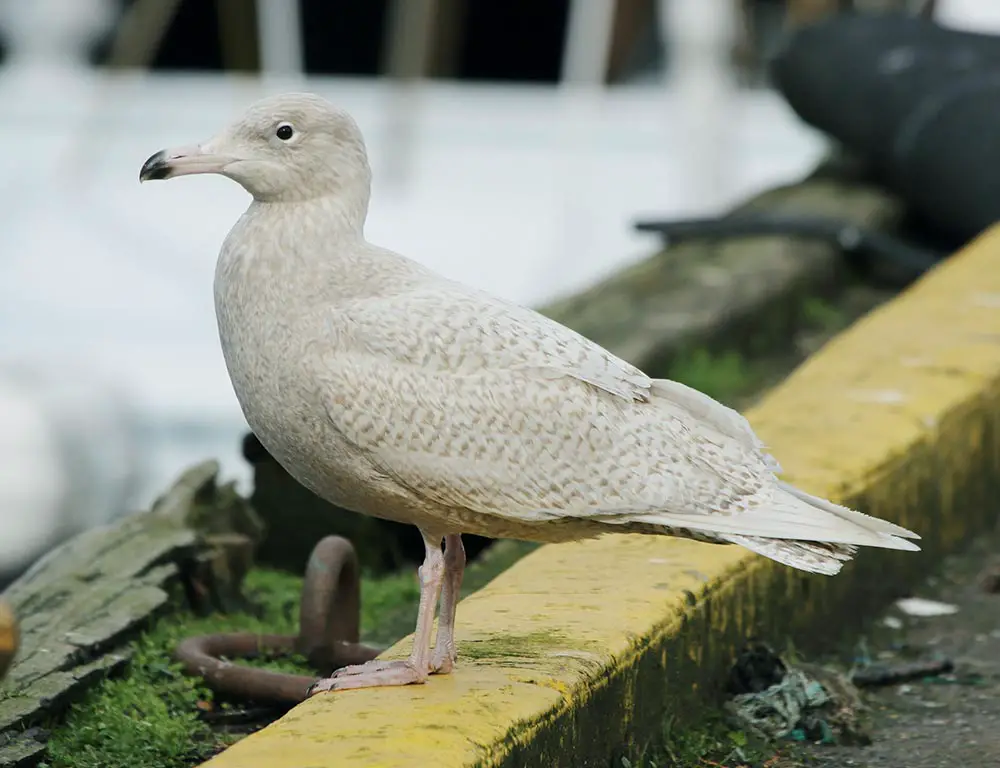
The glaucous gull is a large species of seabird that is the second-largest gull in the world. This species is highly recognizable due to its bright white plumage and sky-blue eyes.
Its genus name, Larus, is derived from the Latin language and is thought to have originally referred to a gull or other large seabird. The glaucous gull is primarily found in coastal areas and is found in the Northern Hemisphere.
This species is also known for foraging in large flocks and scavenging for food. It is a carnivore and its diet consists of small fish, mollusks, crustaceans, and insects.
The glaucous gull is also known for its protective nature of its young and will fiercely defend its nest from any intruders. This species is a long-lived bird with some having been known to live up to 30 years.
The glaucous gull is an important species to its ecosystem as it helps to keep the balance of the food chain. Its population is currently in decline due to overfishing and the destruction of its natural habitat.
| Kingdom | Animalia |
| Phylum | Chordata |
| Class | Aves |
| Order | Charadriiformes |
| Family | Laridae |
| Genus | Larus |
| Species | L. hyperboreus |
2. Barnacle Goose
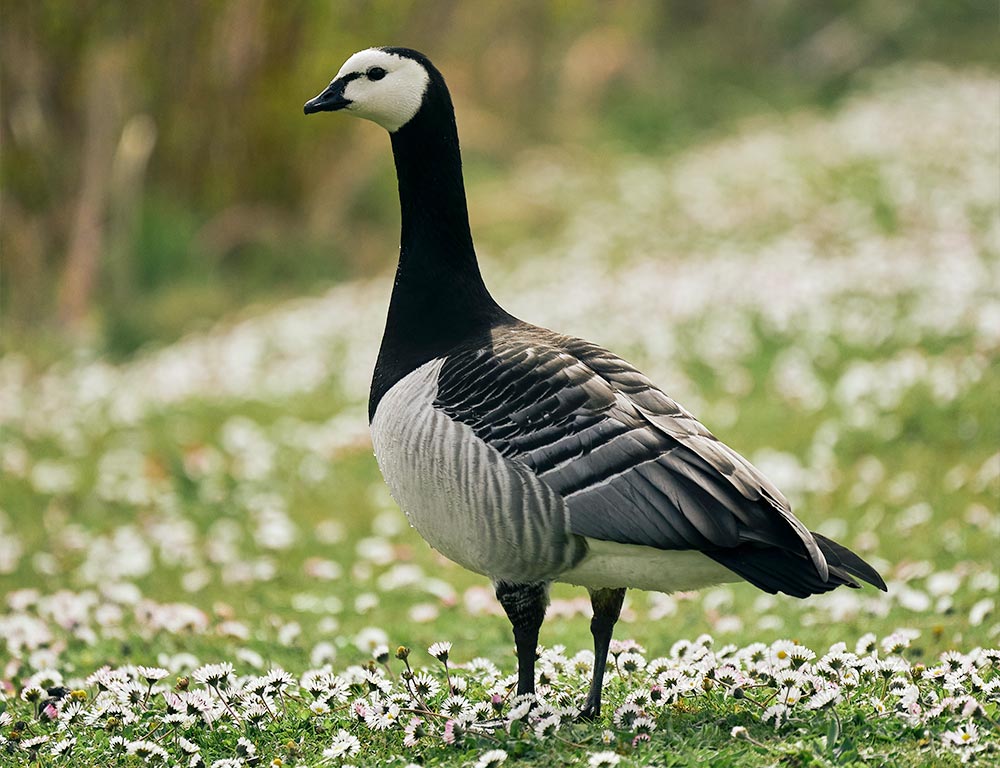
The barnacle goose is a species of goose that belongs to the genus Branta, which is comprised of black geese. These species have a distinct black plumage, setting them apart from the grey geese that belong to the genus Anser.
The black plumage of the Branta species is found in both males and females and is a defining characteristic that helps to identify them. This species of goose is found in the Northern Hemisphere and is known for its long migratory routes that span thousands of miles.
The barnacle goose is easily recognizable due to its unique black plumage, with white neck markings and a white patch on its chest. It has a medium-sized body, with a wingspan of about three feet. Its long, pointed bill helps it to feed on aquatic plants and insects.
The barnacle goose is a relatively rare species, and its population is slowly declining, making it an important species to conserve.
| Kingdom | Animalia |
| Phylum | Chordata |
| Class | Aves |
| Order | Anseriformes |
| Family | Anatidae |
| Genus | Branta |
| Species | B. leucopsis |
3. Hen Harrier
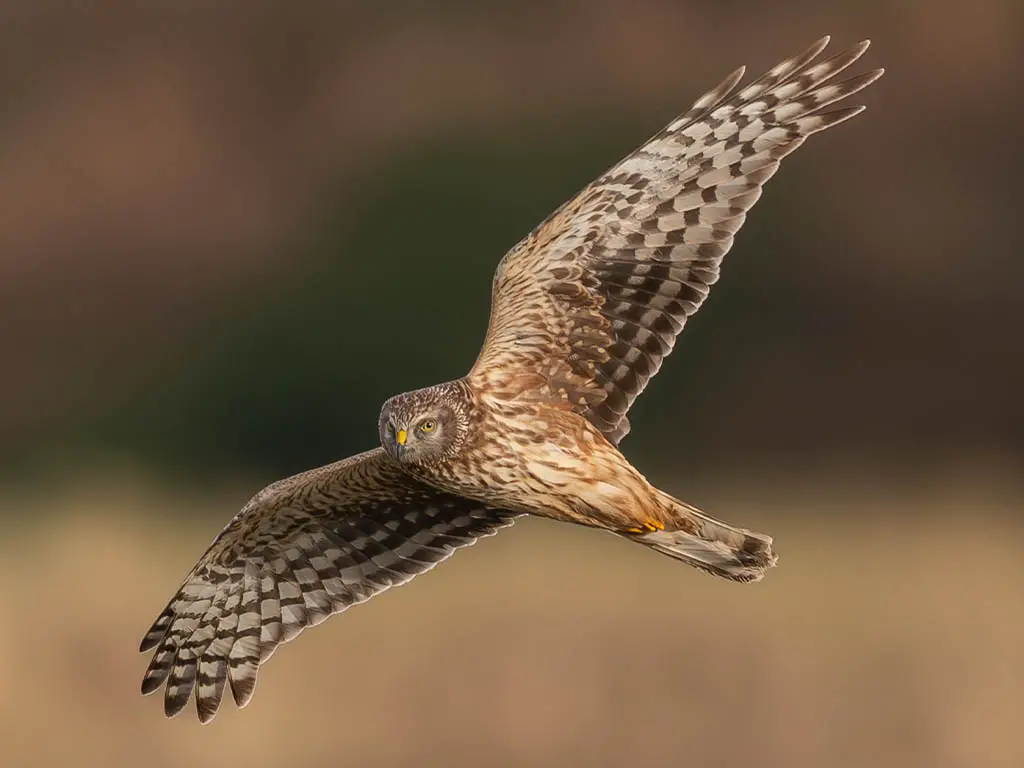
The hen harrier is a type of bird of prey native to Eurasia. It gets its name from its former habit of preying on free-ranging fowl. This bird species breeds in Eurasia but migrates to more southerly areas in winter to survive the colder temperatures.
Eurasian hen harriers are known to move to southern Europe and southern temperate Asia during these times of migration.
The hen harrier is an important species that is integral to its local ecosystem, as it helps to control populations of other animals, such as rodents and other birds.
Without the hen harrier, the populations of these animals could become out of balance, leading to further environmental issues.
| Kingdom | Animalia |
| Phylum | Chordata |
| Class | Aves |
| Order | Accipitriformes |
| Family | Accipitridae |
| Genus | Circus |
| Species | C. cyaneus |
4. Corncrake
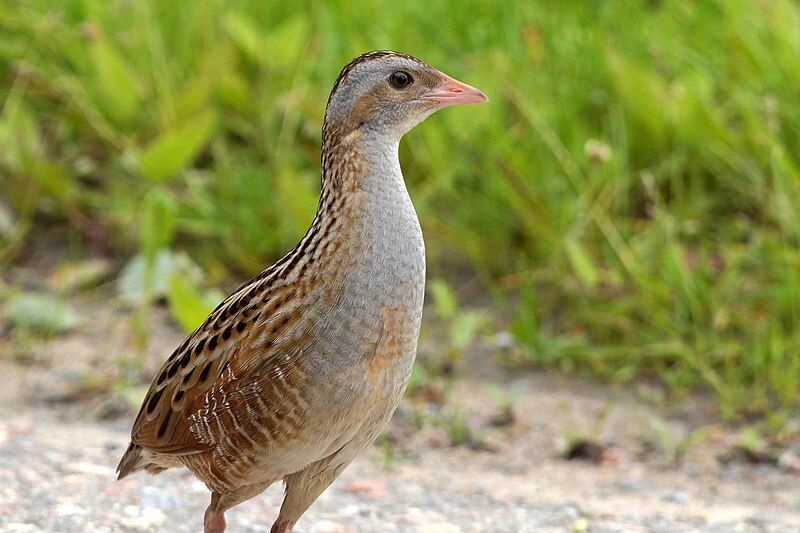
The corn crake, also known as the corncrake or landrail, is an avian species belonging to the rail family. This species is found throughout Europe and much of Asia, ranging as far east as western China.
During the winter months, they migrate to Africa to escape the colder temperatures of the northern hemisphere. The corn crake is a medium-sized bird, with a plump body and a short tail.
They have a distinctive, loud call which is often described as a ‘crex-crex’ or ‘krek-krek’ sound. They can be found in wet grasslands, meadows, and marshes, where they feed on insects, plants, and seeds.
The birds are short-distance migrants, traveling mainly by night and usually in large flocks. In addition to their distinctive call, corn crakes are also known for their distinctive courtship displays.
Male birds will bow, clap their wings and make a distinct ‘krek-krek’ sound, to attract a mate.
Corncrakes are also monogamous, with pairs staying together for the breeding season. The corn crake is listed as a vulnerable species on the IUCN Red List, due to their population declining in recent years.
The main threats to their survival are habitat loss, predation from other animals, and hunting for food. Conservation efforts by groups such as the RSPB have helped to protect the species, but more needs to be done to ensure their survival.
| Kingdom | Animalia |
| Phylum | Chordata |
| Class | Aves |
| Order | Gruiformes |
| Family | Rallidae |
| Genus | Crex |
| Species | C. crex |
5. Golden Eagle
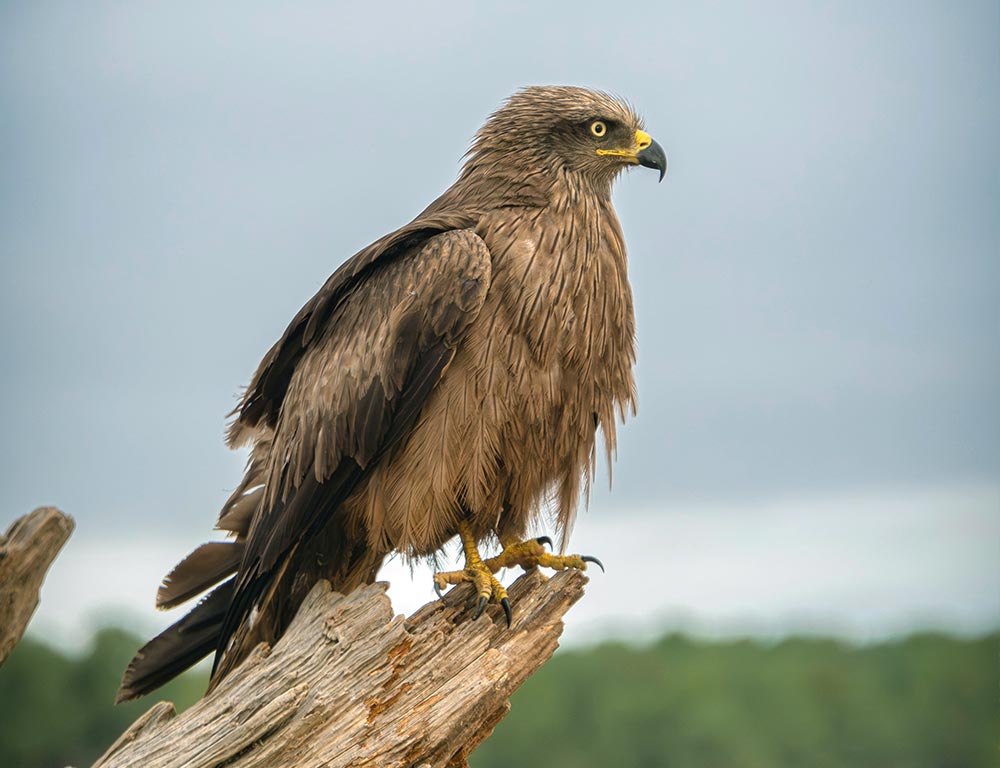
The golden eagle is a majestic bird of prey that inhabits the Northern Hemisphere and is the most widely distributed species of eagle in the world. This species belongs to the Accipitridae family, which is one of the most recognizable families of birds of prey.
Golden eagles are one of the largest and most powerful of all raptors, with strong wings and powerful legs. They have long, broad wings that can carry them across considerable distances and allow them to hunt over a wide area.
They feed primarily on small mammals, such as rabbits and ground squirrels, but they also take birds, snakes, and other animals. They are also known scavengers that will feed on carrion.
Golden eagles are adaptable, living in many different habitats, from mountain peaks to lowland grasslands. They build large nests in tall trees and cliffs, using branches and sticks.
They are fiercely protective of their nests and will aggressively defend it from predators and intruders. Overall, the golden eagle is a remarkable species of bird of prey that continues to fascinate people to this day.
| Kingdom | Animalia |
| Phylum | Chordata |
| Class | Aves |
| Order | Accipitriformes |
| Family | Accipitridae |
| Genus | Aquila |
| Species | A. chrysaetos |
6. Greater White-fronted Goose
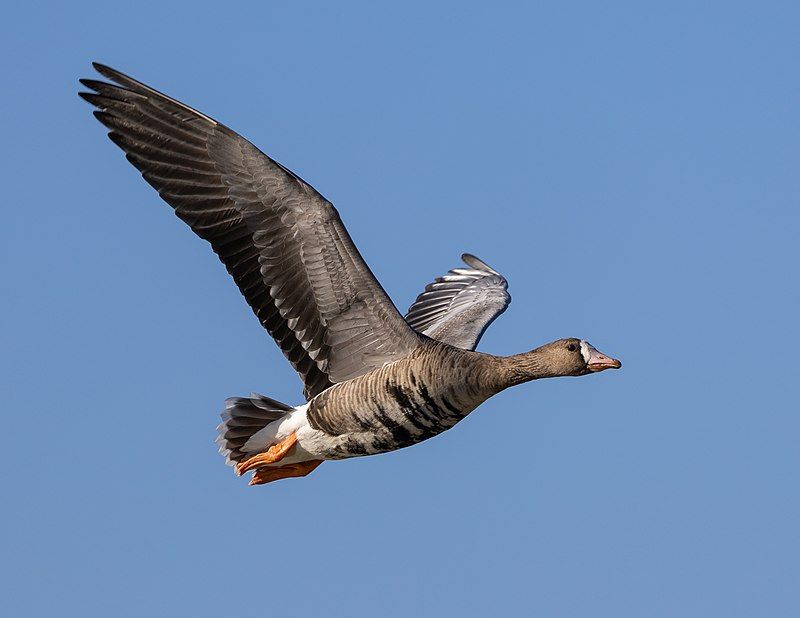
The greater white-fronted goose is a species of goose closely related to the lesser white-fronted goose. It is named for the white feathers at its bill base, which is the most prominent feature.
The scientific name albifrons comes from the Latin albus meaning white, and frons meaning forehead. This aptly describes the white patch at the forehead, which is the distinguishing feature between this species and the lesser white-fronted goose.
The greater white-fronted goose can be found in the Palearctic realm, breeding in northern parts of Eurasia and North America. They prefer wetland habitats such as marshes and bogs, but can also be found in grasslands.
During winter, they migrate to the milder climates of southern Europe and Asia. This species of goose is medium-sized, with a wingspan of about 110 cm. It has a brown back and wings, and a white belly. Its tail is black and the bill is pink.
The white patch at the bill base is the key feature of this species, as it is not found in the lesser white-fronted goose.
The greater white-fronted goose is an important species for conservation, as it is considered to be near threatened by the International Union for Conservation of Nature (IUCN).
It faces threats from habitat loss and hunting, which is why it is important to ensure its protection.
| Kingdom | Animalia |
| Phylum | Chordata |
| Class | Aves |
| Order | Anseriformes |
| Family | Anatidae |
| Genus | Anser |
| Species | A. albifrons |
7. Buzzard
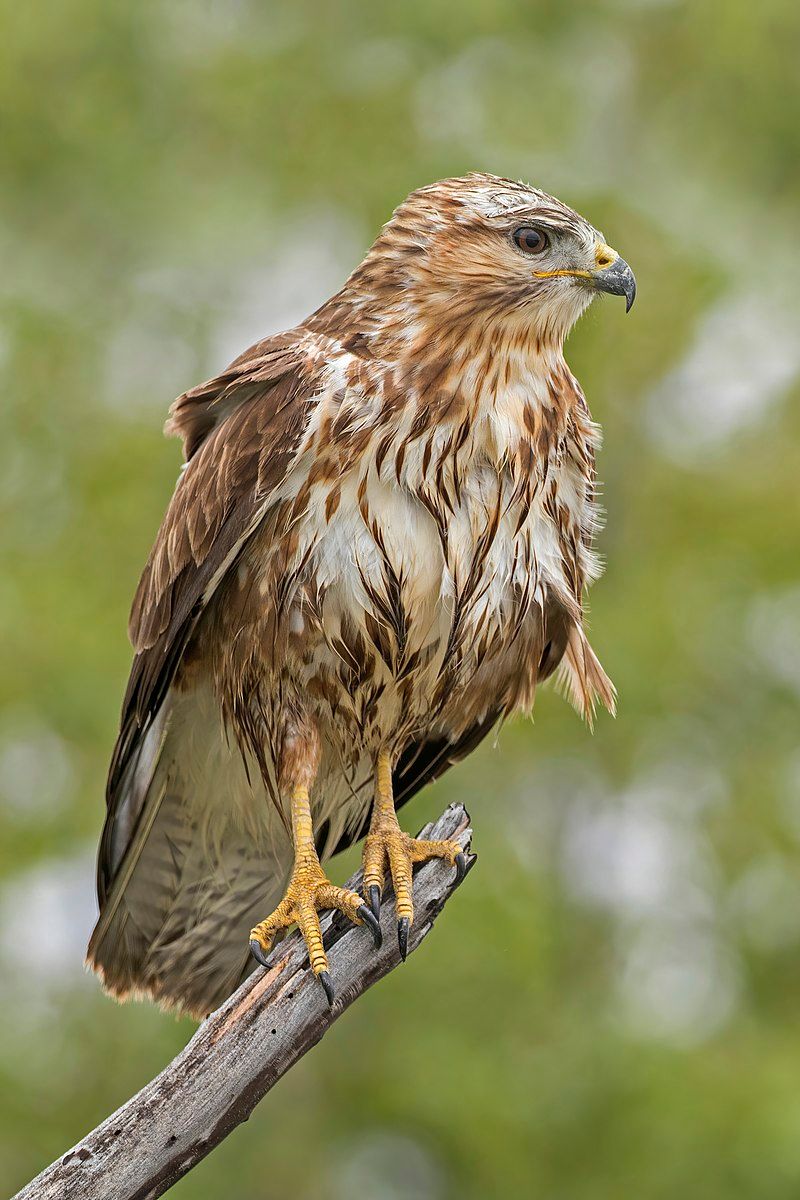
The common buzzard is a bird of prey found across a large range. It is a member of the Buteo genus and the Accipitridae family.
It can be found throughout most of Europe, and its breeding range stretches from the Palearctic region to northwestern China, far western Siberia, and northwestern Mongolia.
This species is classified as medium-to-large in size, with a wingspan of up to four feet. The common buzzard is a scavenger, eating mostly carrion. It can also hunt small birds and mammals, as well as amphibians and reptiles.
This species has an impressive soaring ability and can be seen soaring in the sky in search of food. The common buzzard is a monogamous species, with pairs staying together for life.
They build large nests in trees or on cliffs, and the female typically lays two to three eggs. The common buzzard is a species that is typically well-adapted to human activity and can often be found in urban settings.
While their numbers have dwindled in some areas due to human development, they are still a common sight in many parts of Europe. They are also classified as a species of least concern by the International Union for Conservation of Nature.
| Kingdom | Animalia |
| Phylum | Chordata |
| Class | Aves |
| Order | Accipitriformes |
| Family | Accipitridae |
| Genus | Buteo |
| Species | B. buteo |
8. Chough
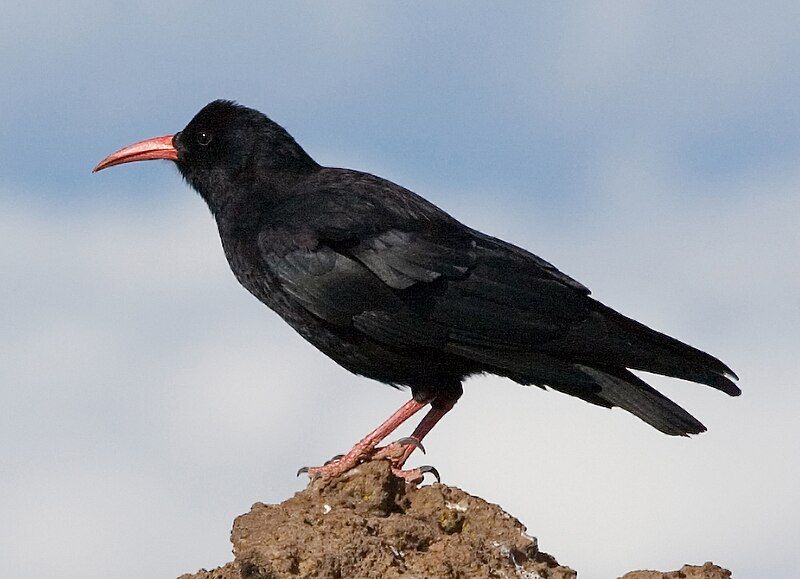
The red-billed chough, also known as the Cornish chough or simply chough, is a species of bird that belongs to the crow family. It is one of only two species in the genus Pyrrhocorax, with the other species being the alpine chough.
The red-billed chough is found in parts of Europe, Asia, and North Africa, and is known for its incredible aerial acrobatics and its loud and distinctive call. Its feathers are a glossy black with a bright red bill and legs.
The red-billed chough has a long and deeply forked tail, and its wings are long and pointed. It typically feeds on insects, seeds, fruit, and carrion, and is highly social and often seen in large flocks.
It is also known to form long-term pair bonds, and both parents help to raise their young. The red-billed chough’s population is currently in decline due to the destruction of its alpine habitat, and it is now classified as a Near Threatened species on the IUCN Red List.
| Kingdom | Animalia |
| Phylum | Chordata |
| Class | Aves |
| Order | Passeriformes |
| Family | Corvidae |
| Genus | Pyrrhocorax |
| Species | P. pyrrhocorax |
9. Oystercatcher
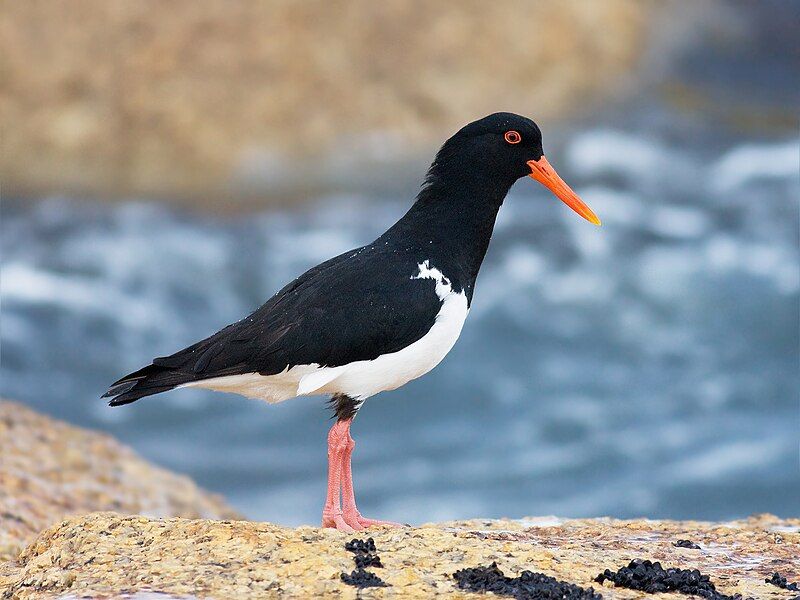
Oystercatchers are a family of birds that belong to the wader group of birds, which includes shorebirds, gulls, and auks.
These birds are part of the single genus Haematopus, which can be found in coastal areas all over the world, except for regions near the poles and the tropics of Africa and Southeast Asia.
Oystercatchers are known for their long, bright-colored beaks, which they use to feed on oysters, mussels, and other mollusks found in the ocean. They also have long, powerful legs that help them move quickly across the shoreline in search of food.
Oystercatchers are often seen in groups, foraging together and communicating with each other using their loud, distinctive calls.
They are a unique species that is essential to the health of the marine environment, as they help to keep the population of mollusks in check and maintain the balance of the food chain.
| Kingdom | Animalia |
| Phylum | Chordata |
| Class | Aves |
| Order | Charadriiformes |
| Family | Haematopodidae |
| Genus | Haematopus |
10. Razorbill
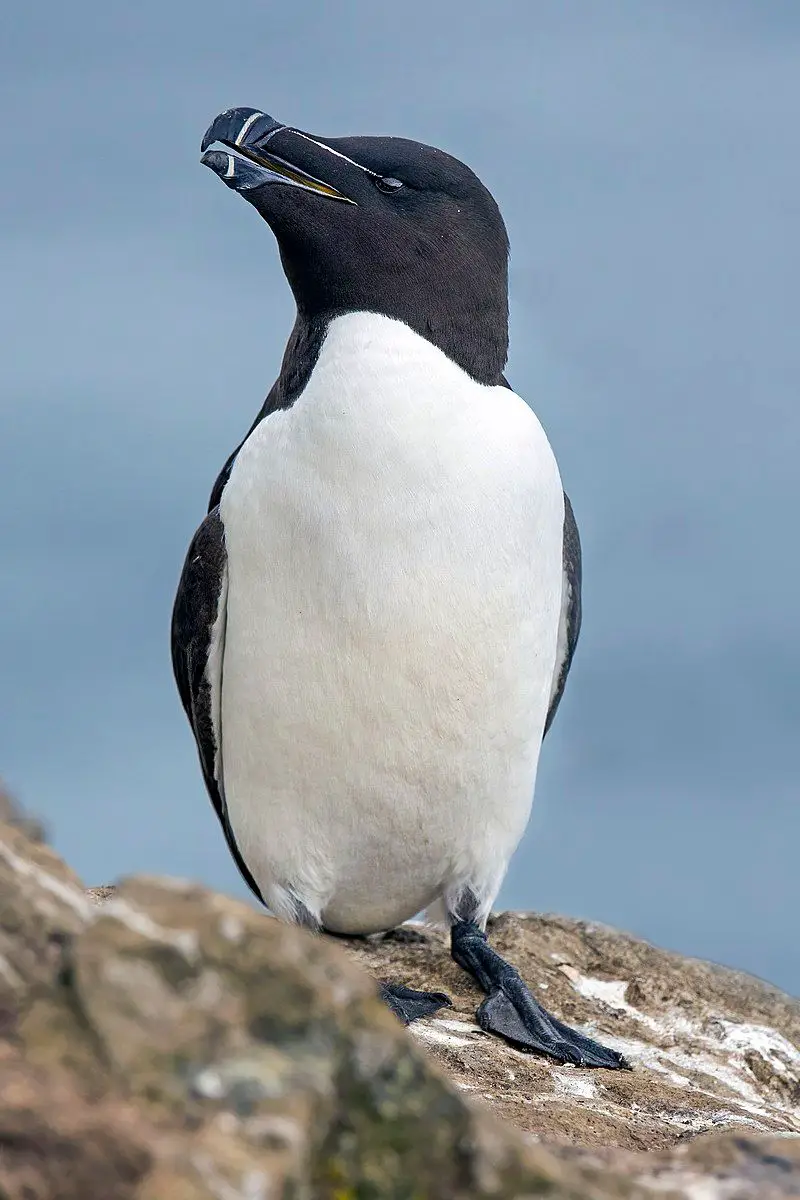
The Razorbill is a seabird from the North Atlantic region. It is a member of the Alcidae family and is the only living member of the Alca genus. This species is closely related to the now-extinct Great Auk, which was a large seabird that was once abundant in the North Atlantic.
Razorbills are stocky birds with black feathers on their upper body and white feathers on their underside. They are usually found in coastal areas such as cliffs, islands, and rocks. They usually feed on small fish, crustaceans, and mollusks.
During the summer months, Razorbills form large colonies to breed. They lay one large white egg in a nest made of small stones and grass. The parents then take turns incubating the egg, and the chick usually hatches after a month.
Razorbills are protected by the Migratory Bird Treaty Act in the United States and have a conservation status of “Least Concern” globally.
| Kingdom | Animalia |
| Phylum | Chordata |
| Class | Aves |
| Order | Charadriiformes |
| Family | Alcidae |
| Genus | Alca |
| Species | A. torda |
11. Cory’s Shearwater
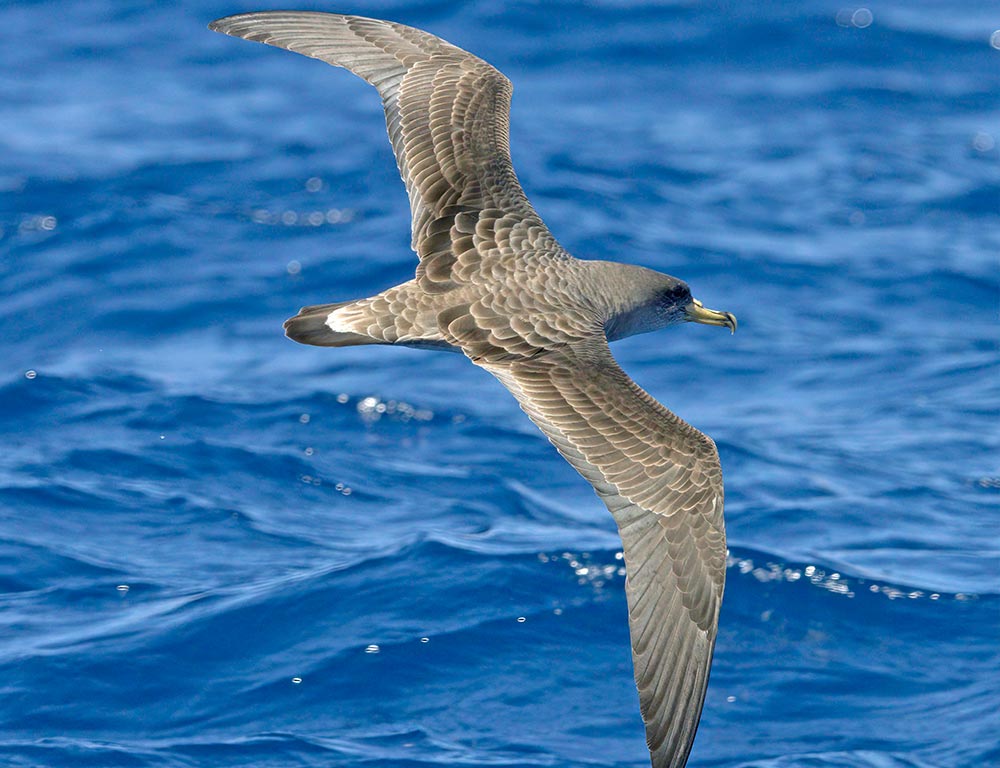
Cory’s shearwater is a species of seabird from the Procellariidae family. It is a large species of shearwater and breeds in colonies on rocky islands in the eastern Atlantic Ocean.
Outside of the breeding season, it has a wide range of habitats in the Atlantic Ocean and has been known to travel far and wide. The Cory’s shearwater used to be considered the same species as the Scopoli’s shearwater, but this distinction has since been made.
The two species are very similar in size and appearance, but the Cory’s shearwater has a slightly paler plumage, and a pale yellow bill, while the Scopoli’s shearwater has a greyish bill.
Both species are long-distance migrants, traveling between their breeding grounds in the eastern Atlantic and their wintering grounds in the tropics.
| Kingdom | Animalia |
| Phylum | Chordata |
| Class | Aves |
| Order | Procellariiformes |
| Family | Procellariidae |
| Genus | Calonectris |
| Species | C. borealis |
12. Twite
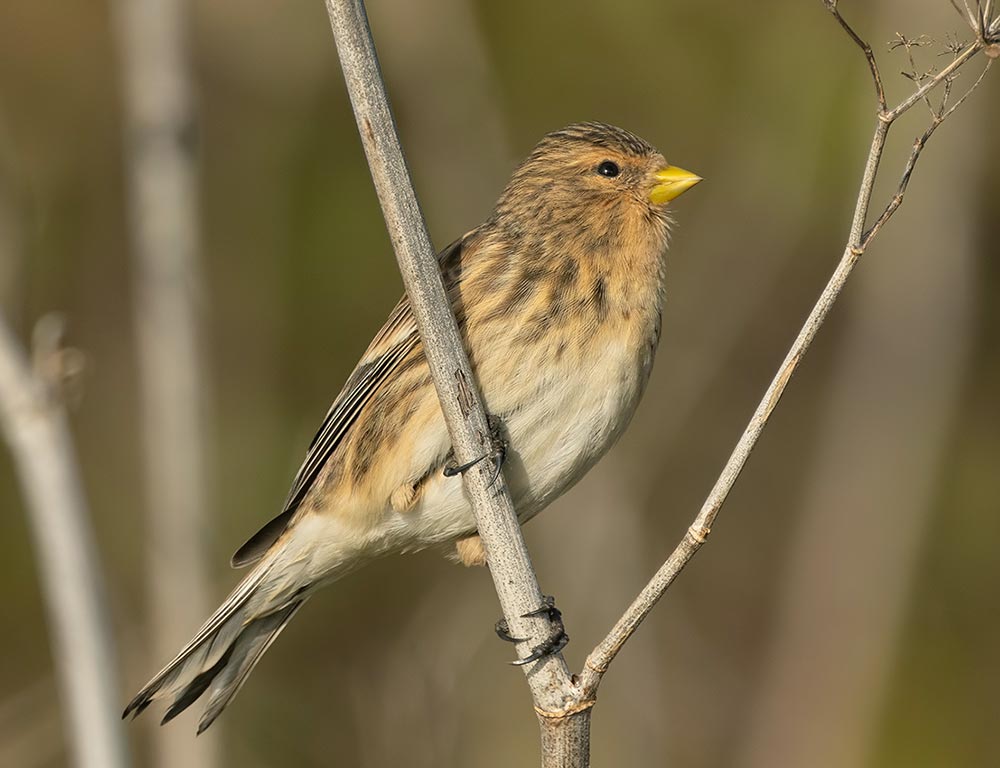
The twite is a small bird in the finch family, Fringillidae. It is similar in size and shape to a linnet, measuring 13-13.5 cm in length. It is a brown color and is streaked with black on its upperparts.
The most notable difference between the twite and its relatives is the lack of a redhead patch and breast, which are seen on the linnet and redpolls. Its rump, however, is a pinkish color.
The twite lives in open and short-grass habitats, such as moorland, coastal grassland, and tundra. It feeds on small insects, larvae, and seeds. It is one of the few British birds that can sing in the winter, which aids in its ability to attract a mate.
They are monogamous and usually breed in the spring and summer months. Twites are considered a vulnerable species in the UK but remain common in some parts of Scotland. It is estimated that only around 10,000 pairs are remaining in the UK.
Populations have declined due to the degradation of their natural habitats, as well as increases in predation by other bird species.
Conservation efforts have been put in place to protect twites, such as the protection of their habitats and the introduction of laws to stop the illegal trapping of birds.
| Kingdom | Animalia |
| Phylum | Chordata |
| Class | Aves |
| Order | Passeriformes |
| Family | Fringillidae |
| Genus | Linaria |
| Species | L. flavirostris |
13. Goose
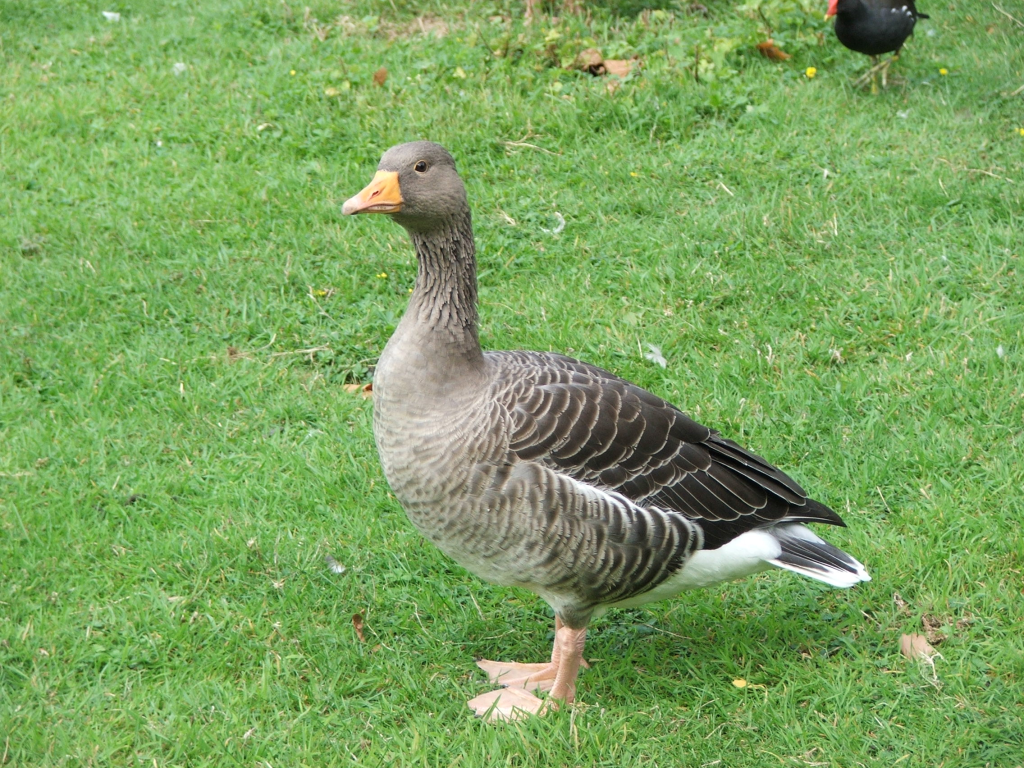
A goose is a type of waterfowl, a type of bird that lives in wet habitats and gets their food from the water. They are part of the Anatidae family, which includes the genera Anser and Branta.
Although many different birds may have the word “goose” in their name, they are usually related to the shelducks. These birds typically have webbed feet, long necks, and bills, and fly in V-shaped formations.
They feed on aquatic plants, seeds, and insects, and are often found in wetlands, lakes, and rivers. Geese are also known for their loud honking noises, which they use to communicate with one another.
Geese are important to the environment, as they help to keep aquatic habitats healthy and balanced. They provide food for other animals, and their droppings help to fertilize plants.
14. Lapwing
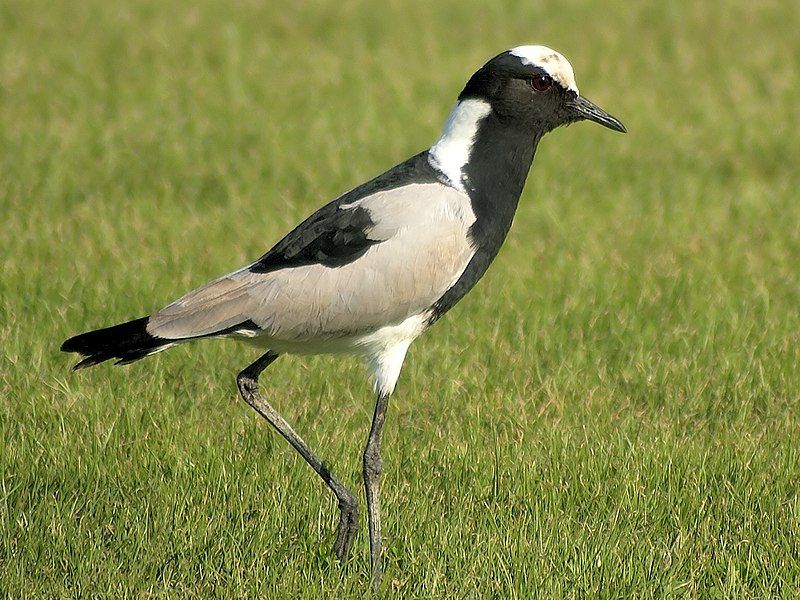
Lapwings are a type of bird which are closely related to plovers and dotterels. They are generally quite small, ranging from 10 to 16 inches in length. Lapwings are most easily identified by their unique flying style.
They flap their wings slowly and irregularly, producing an undulating pattern in the air. Additionally, they are known for their distinctive call, which is a loud, wailing cry. The lapwing’s natural habitat is in grasslands and other open areas.
They prefer to nest on the ground, often using a shallow scrape in the soil or a grassy depression. Lapwings build their nests in small flocks and defend their territory vigorously. They feed mainly on insects but also consume worms, spiders, and other small invertebrates.
Lapwings are a popular subject of study for bird watchers and ornithologists. They are also appreciated by farmers and gardeners, as they provide natural pest control by eating insects, worms, and other small invertebrates.
In some parts of the world, lapwings are considered a delicacy and are hunted for their meat.
| Kingdom | Animalia |
| Phylum | Chordata |
| Class | Aves |
| Order | Charadriiformes |
| Family | Charadriidae |
15. Ringed Plover
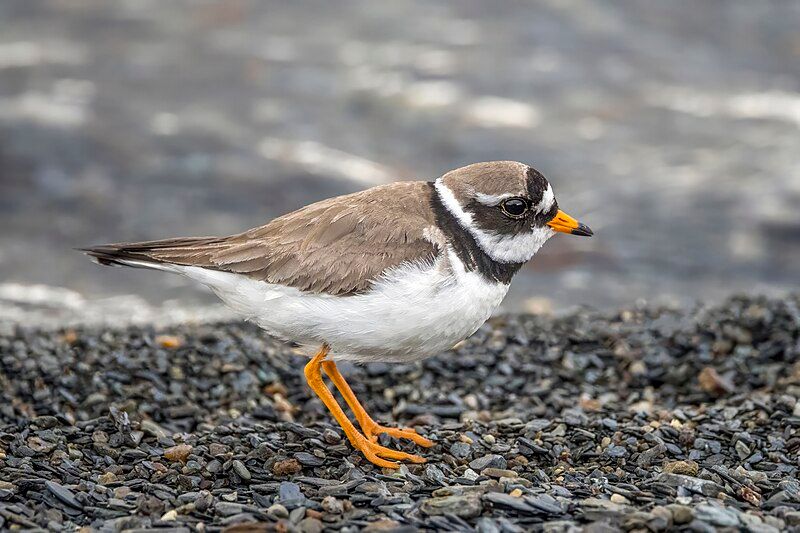
The common ringed plover is a small bird that is found in the Arctic regions of Eurasia. It belongs to the genus Charadrius, which is derived from the Late Latin word for a yellowish bird that was mentioned in the fourth-century Vulgate Bible.
This word also has its roots in the Ancient Greek kharadrios, which referred to a type of bird that was found in ravines and river valleys. The common ringed plover is a species of plover and has a distinctive black and white ringed pattern on its body.
It is believed that this species of bird is a migratory species, that can sometimes be found in the tundra regions and other areas far from its native range.
| Kingdom | Animalia |
| Phylum | Chordata |
| Class | Aves |
| Order | Charadriiformes |
| Family | Charadriidae |
| Genus | Charadrius |
| Species | C. hiaticula |
16. Common Murre
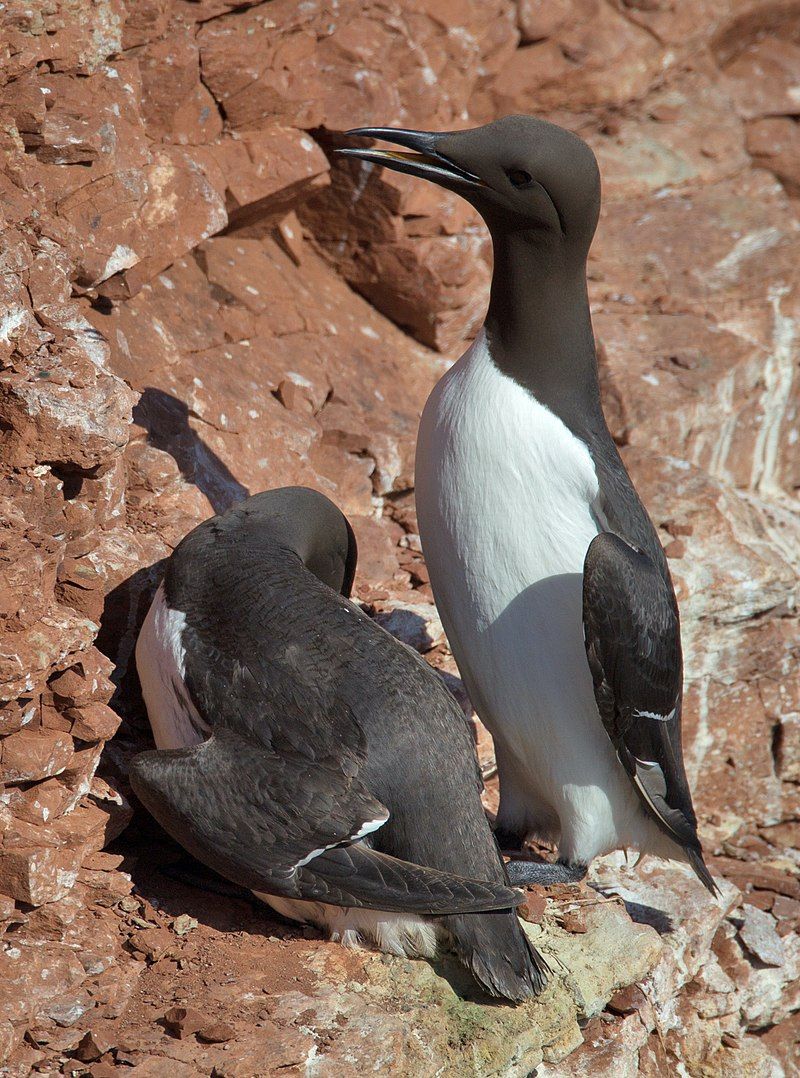
The common murre, also known as the common guillemot, is a type of large auk that is found in the North Atlantic and North Pacific. It has a circumpolar distribution, which means that it is found in Arctic and boreal waters that are located near the poles.
This bird spends the majority of its life in the ocean, only returning to land during breeding season. It chooses to nest on rocky cliff shores or islands, providing the perfect environment for its eggs.
The common murre is an incredible species that can survive in the harshest of conditions, making it a true example of adaptation and resilience.
| Kingdom | Animalia |
| Phylum | Chordata |
| Class | Aves |
| Order | Charadriiformes |
| Family | Alcidae |
| Genus | Uria |
| Species | U. aalge |
17. Sooty Shearwater
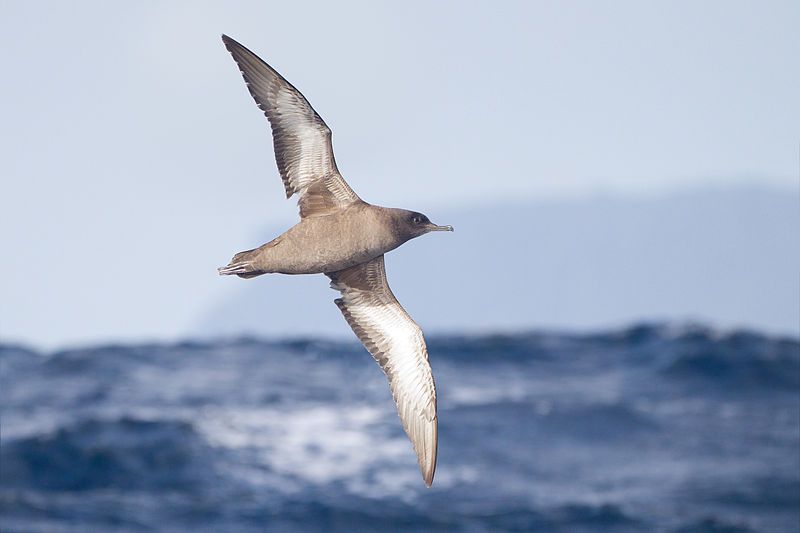
The sooty shearwater is a species of seabird which belongs to the Procellariidae family. It can be found in countries such as New Zealand, where it is known by its Māori name, ‘tītī’.
This species of seabird is related to other species such as the wedge-tailed shearwater and the Australian short-tailed shearwater, and is also referred to as a ‘muttonbird’. It is a medium-large sized shearwater and can be recognized by its distinctive dark grey plumage.
Sooty shearwaters are mainly found in the Southern Hemisphere and are known to migrate long distances to breed in the spring and summer months. They are often seen in large flocks, but can also be found in smaller groups.
Their diet consists mainly of small fish, cephalopods, and crustaceans which they catch while in flight. The sooty shearwater is a highly adaptable species and can be found in a variety of different habitats, from the coasts to the open ocean.
They have also been known to travel to more extreme habitats such as the Antarctic, and even to the Northern Hemisphere. They are considered to be a keystone species in the Procellariidae family and play an important role in the food chain.
| Kingdom | Animalia |
| Phylum | Chordata |
| Class | Aves |
| Order | Procellariiformes |
| Family | Procellariidae |
| Genus | Ardenna |
| Species | A. grisea |
18. Iceland Gull
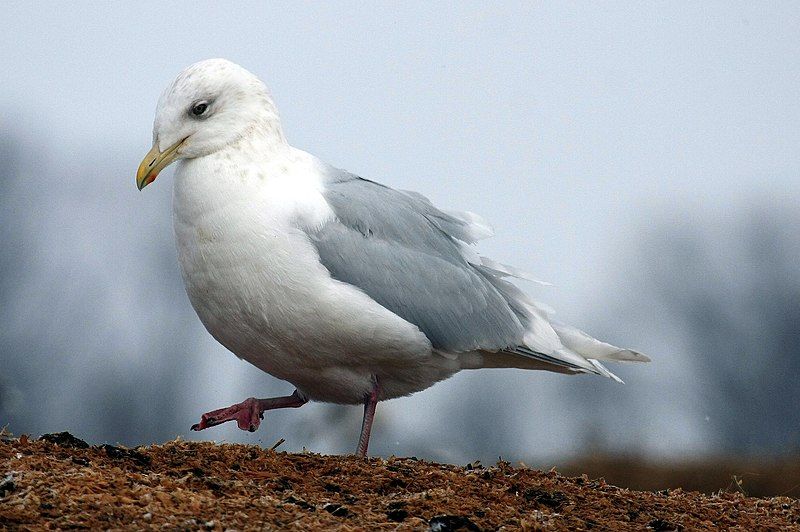
The Iceland gull is a species of gull that is typically found in the Arctic regions of Canada and Greenland. It does not breed in Iceland but rather is only seen there during the winter months.
The scientific name for this species is derived from Latin, specifically from the word larus, which is believed to refer to a type of large seabird such as a gull. The Iceland gull is a medium-sized species of gull, and its body is mainly white with some gray or black feathers.
It has a yellow bill and yellow legs, and its eyes are usually yellow or brown. This species feeds mainly on insects, fish, and crustaceans, and they make their nests near the shoreline.
The Iceland gull is a fairly common sight in its Arctic habitats, and it is considered to be a valuable part of the local ecosystem.
| Kingdom | Animalia |
| Phylum | Chordata |
| Class | Aves |
| Order | Charadriiformes |
| Family | Laridae |
| Genus | Larus |
| Species | L. glaucoides |
19. Manx Shearwater
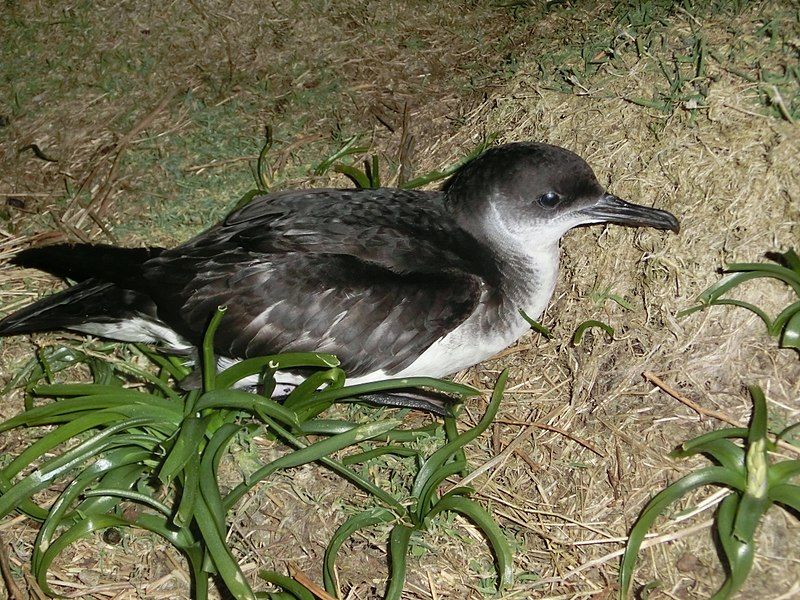
The Manx shearwater is a species of seabird belonging to the Procellariidae family. This species is medium-sized in comparison to other shearwaters.
Its scientific name is a result of a name shift, as Manx shearwaters were previously referred to as Mank’s puffins in the 17th century. The word “puffin” is derived from the Anglo-Norman interpretation of the preserved carcasses of nestling shearwaters.
This name shift is an example of how language and terminology can change over time, especially in the scientific community.
| Kingdom | Animalia |
| Phylum | Chordata |
| Class | Aves |
| Order | Procellariiformes |
| Family | Procellariidae |
| Genus | Puffinus |
| Species | P. puffinus |
20. Peregrine
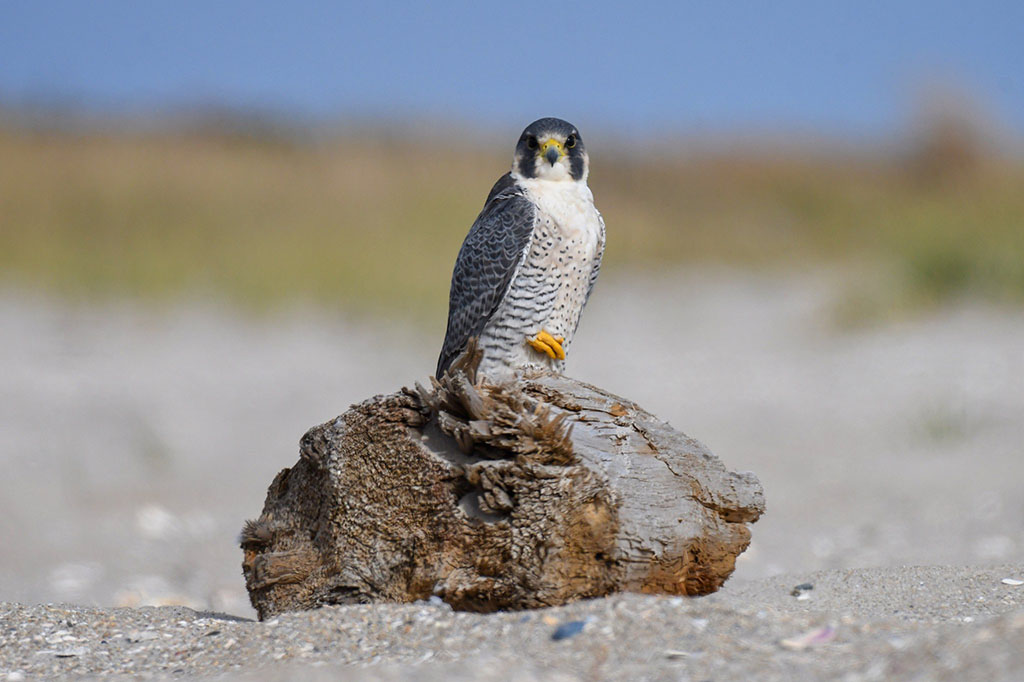
The peregrine falcon is a large, powerful bird of prey that is found all across the world. Its scientific name is Falco peregrinus, but it is also known as the duck hawk in North America. It is a large bird, with a wingspan of around a meter and a body the size of a crow.
Its back is a steel-blue color, while its underside is white with dark barring. The head is black, and the face has a distinctive pattern of dark patches. The peregrine is most famous for its speed.
It can reach speeds of up to 200 mph while diving, making it the fastest animal on the planet. It is also capable of maneuvering at high speeds, allowing it to catch its prey with incredible accuracy.
Its speed and agility make it a formidable hunter, and it is capable of taking down birds of various sizes, from small passerines to large waterfowl. The peregrine is a powerful symbol of strength and speed, and its presence can be a source of inspiration.
Its ability to soar through the sky with ease and grace is a reminder of the power of nature, and its determination and skill make it a symbol of resilience and perseverance.
| Kingdom | Animalia |
| Phylum | Chordata |
| Class | Aves |
| Order | Falconiformes |
| Family | Falconidae |
| Genus | Falco |
| Species | F. peregrinus |
21. Pied Wagtail
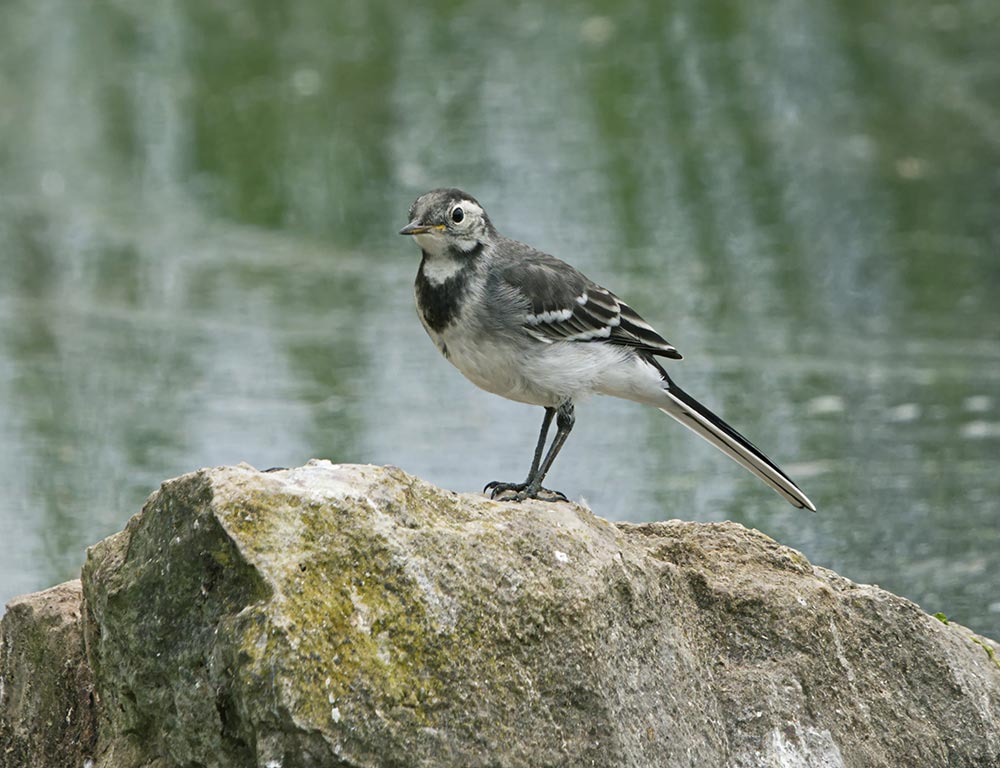
The Mekong wagtail is a species of bird found in the family Motacillidae. It was first described in 2001 and was named in honor of the late Cambodian ornithologist Sam Veasna.
This species is known for its black and white plumage, which is quite similar to the African pied wagtail. Although the two species look similar, their geographic range does not overlap.
The Mekong wagtail is found in East and Southeast Asia whereas the African pied wagtail is found in sub-Saharan Africa. The Mekong wagtail is a medium-sized bird, measuring about 18-20 cm in length.
It has a distinctive black and white plumage, with black upperparts and white underparts. Its long tail is black with white outer feathers and a white tip. The head is black, with a white eyebrow and black cheek. It has a white throat and a white undertail.
The bill is black and the legs are grey. The habitat of the Mekong wagtail includes wetlands, grasslands, and rice fields. It feeds mainly on insects, but it will also eat small worms and seeds.
It is an active forager, often hopping and running along the ground in search of food. The species was first described in 2001, by Cambodian ornithologist Sam Veasna. It is named after him in honor of his work in documenting the natural history of Cambodia and Southeast Asia.
The Mekong wagtail is listed as ‘Least Concern’ on the IUCN Red List of Threatened Species, due to its large global population and wide range.
| Kingdom | Animalia |
| Phylum | Chordata |
| Class | Aves |
| Order | Passeriformes |
| Family | Motacillidae |
| Genus | Motacilla |
| Species | M. samveasnae |
Conclusion
Birds in Islay are a vital part of the island’s ecosystem and culture. They provide an important source of food, forage, and materials that sustain the island’s human and wildlife populations.
Birds are also an important part of the unique beauty and natural heritage of Islay. The residents and visitors to the island benefit from the presence of these birds and much work is being done to ensure that they remain a part of the island’s future.